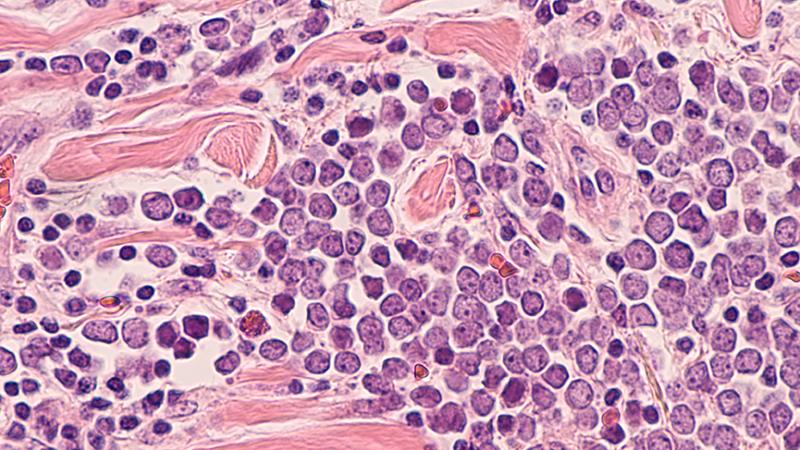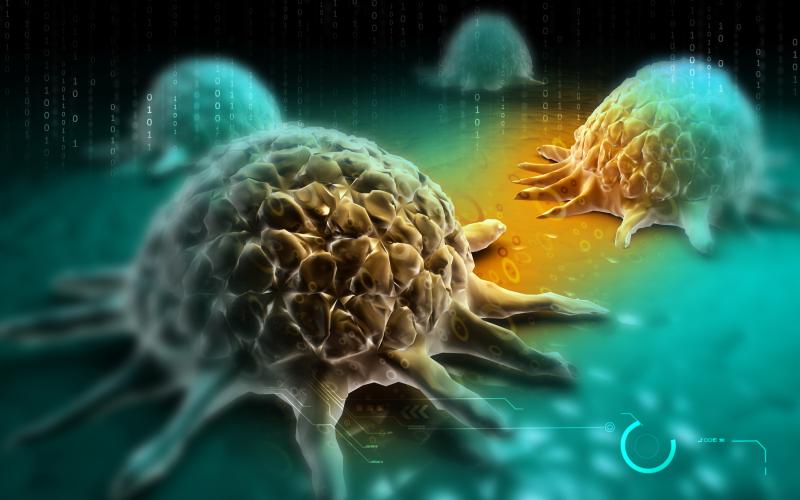Content on this page:
Content on this page:
Overview
Neuroendocrine tumors are rare, small, slow-growing
epithelial neoplasms with predominant neuroendocrine differentiation found in
most organs of the body and arise from cells throughout the diffuse endocrine
system, as stated in the Introduction
section.
There is an increased incidence of neuroendocrine tumors
seen in Western countries compared to Asian and European countries. A detailed
discussion about the prevalence of neuroendocrine tumors is in the Epidemiology section.
The Pathophysiology section states that neuroendocrine tumors have cytologic
features of an endodermal origin, and NETs have the ability to store and
secrete various peptides and neuroamines.
 Neuroendocrine Tumors_Disease Summary
Neuroendocrine Tumors_Disease SummaryThe risk factors of neuroendocrine tumors are in the Risk Factors section.
The Classification section lists the most common subtypes of pancreatic neuroendocrine tumors.
History and Physical Examination
The Clinical Presentation section describes the clinical features suggestive of neuroendocrine tumors depending on the type.
Diagnosis
The Diagnosis or
Diagnostic Criteria section
features the types of neuroendocrine neoplasm according to differentiation,
grade, and proliferative rate.
Patients with neuroendocrine tumors are recommended to have
a genetic risk assessment, which is further discussed in the Screening section.
Discussions on biochemical markers such as chromogranin A, 5-hydroxyindoleacetic
acid, and neuron-specific enolase in the evaluation of neuroendocrine
tumors are in the Laboratory Tests and
Ancillaries section.
Imaging studies such as computed tomography scan, magnetic
resonance imaging, ultrasonography, somatostatin receptor-positron emission
tomography scan and scintigraphy are discussed in detail in the Imaging section. Invasive procedures such
as bronchoscopy, endoscopic ultrasonography, mediastinoscopy, endoscopy,
colonoscopy, and echocardiogram are also discussed in this section.
Management
The American Joint Committee on Cancer (AJCC) and European
Neuroendocrine Tumor Society (ENETS) developed the TNM System for NETs of all
anatomical sites. The AJCC prognostic staging of neuroendocrine tumors
depending on the site is presented in the Evaluation
section.
General therapy principles and goals of therapy for
neuroendocrine tumors are discussed in the Principles
of Therapy section.
The Pharmacological
Therapy section discusses in
detail treatment options of neuroendocrine tumors, such as somatostatin
analogs, mammalian target of rapamycin inhibitors, kinase inhibitors,
interferon alpha and immunotherapy. Chemotherapy as an option for the treatment
of neuroendocrine tumors is also discussed in this section.
Surgical management of neuroendocrine tumors is considered
after a full multidisciplinary evaluation. Curative and palliative surgery
options are explained in the Surgery section.
The Radiotherapy section discusses radioisotope therapy and
radiotherapy as a treatment option in neuroendocrine tumors depending on
patient factors, disease site and stage.
The Monitoring
section identifies follow-up recommendations for patients with neuroendocrine
tumors, depending on the duration and status of the disease.




